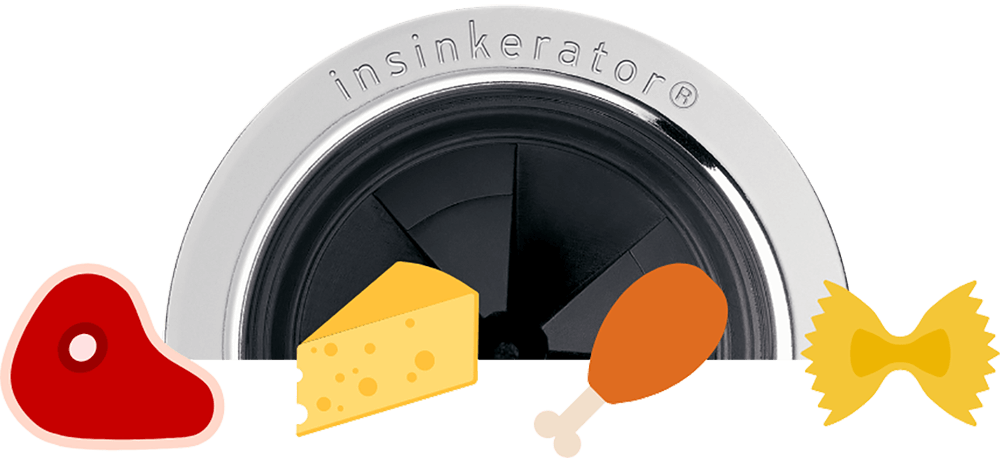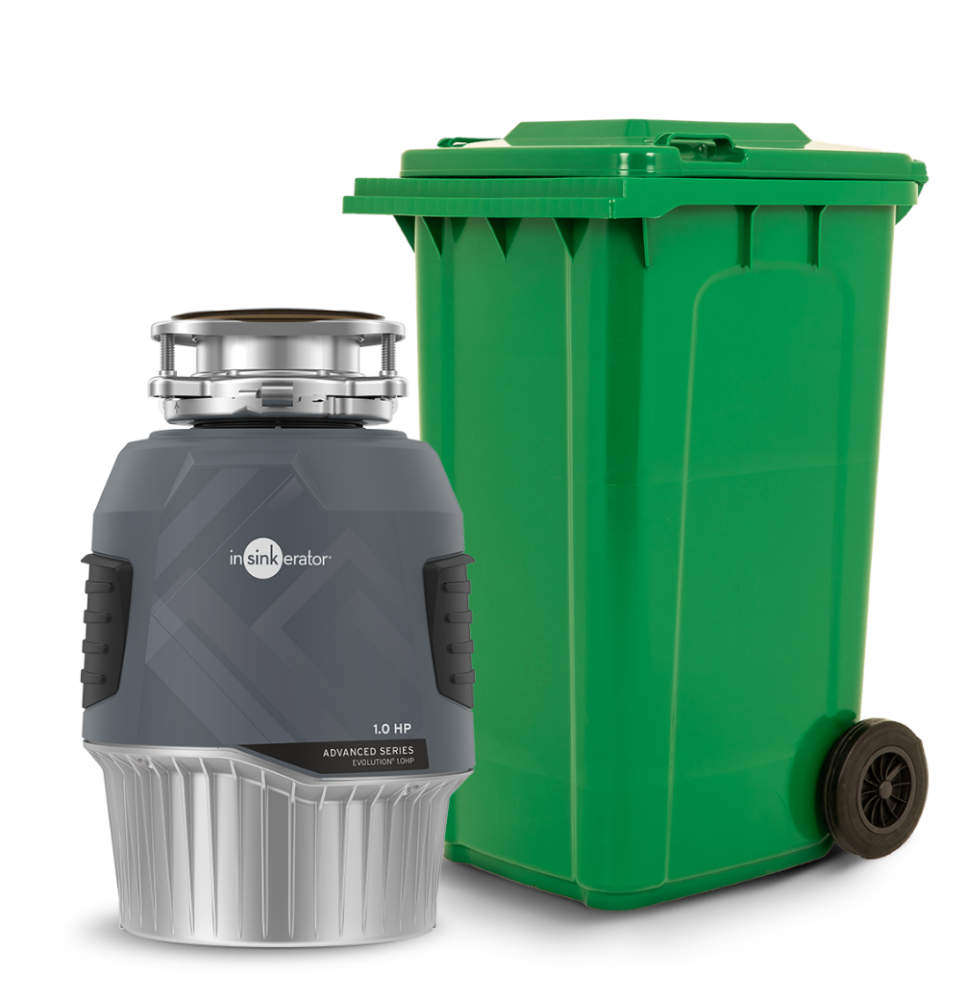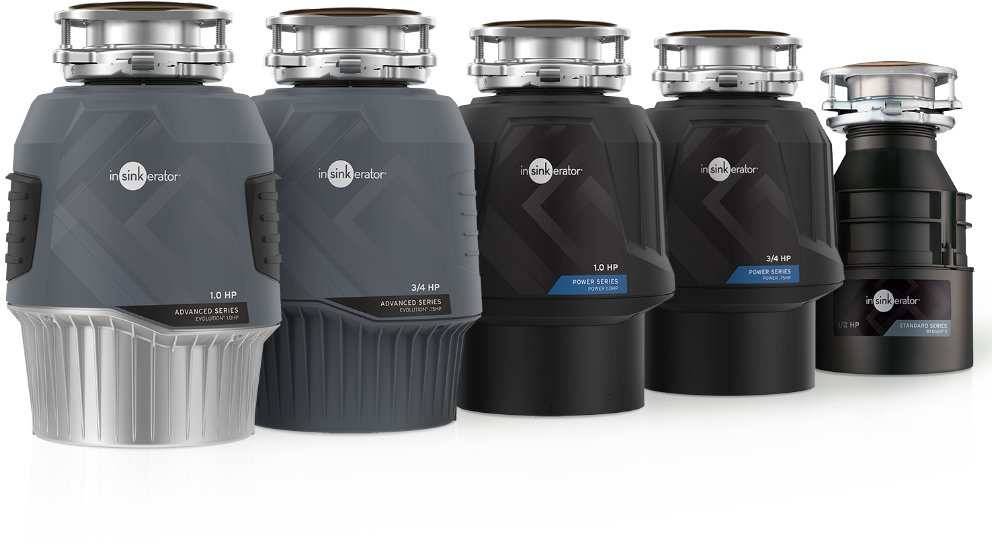By using our site, you acknowledge that you have read and understand our Privacy Policy.

Using a Garburator is easy!
Let’s work together to keep food waste out of the landfill.
81% of all greenhouse gas emissions from the waste industry come from landfills. The average Canadian household produces about 79 kg (174 lbs) of food waste each year. You can help the environment by reducing the amount of food waste sent to landfills and slowing the impact of climate change.
Source: Greenhouse gas sources and sinks in Canada: executive summary 2022
The disposer grinds food waste into fine particles.
InSinkErator® food waste disposers are designed to grind most types of food waste. The fine particles flow downstream to a wastewater treatment facility. Prior to treatment, foodwaste is 60-95% water1. After treatment, about 7% of food waste remains as biosolids2.
1“Characterization of typical household food wastes from disposers: Fractionation of constituents and implications for resource recovery at wastewater treatment” - Bioresource Technology 183, 2015
2PE Americas, Life Cycle Assessment, 2011












